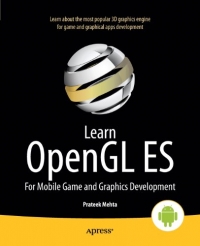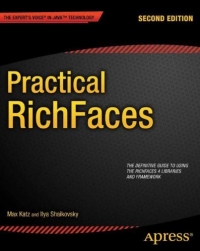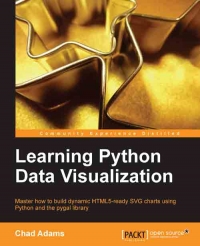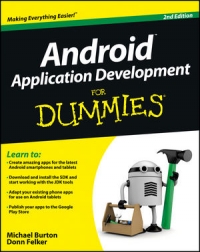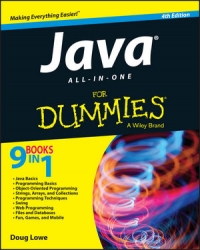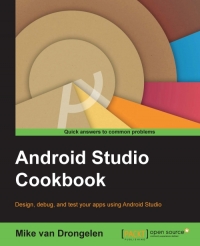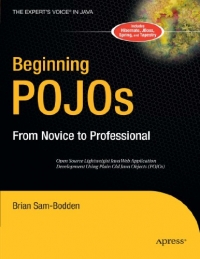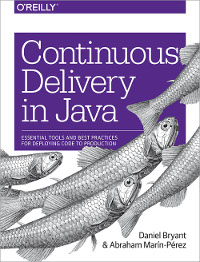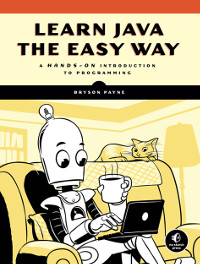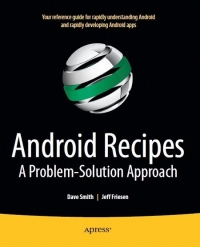Learn OpenGL ES
Want to create sophisticated games and graphics-intensive apps? Learn OpenGL ES gets you started immediately with OpenGL ES. After mastering the basics of OpenGL ES itself, you will quickly find yourself writing and building game apps, without having to learn about object oriented programming techniques. This book demonstrates the use of a powerful open-source modeling tool, Blender. You will be guided, step by step, through the development of Tank Fence, a dynamic, interactive 3D game. Along the way you'll gain skills in building apps with Eclipse and the Android SDK or NDK, rendering graphics using hardware acceleration, and multithreading for performance and responsiveness. iOS developers will also find this book's information invaluable when writing their apps. ...
Want to create sophisticated games and graphics-intensive apps? Learn OpenGL ES gets you started immediately with OpenGL ES. After mastering the basics of OpenGL ES itself, you will quickly find yourself writing and building game apps, without having to learn about object oriented programming techniques. This book demonstrates the use of a powerful open-source modeling tool, Blender. You will be guided, step by step, through the development of Tank Fence, a dynamic, interactive 3D game. Along the way you'll gain skills in building apps with Eclipse and the Android SDK or NDK, rendering graphics using hardware acceleration, and multithreading for performance and responsiveness. iOS developers will also find this book's information invaluable when writing their apps. ...
Practical RichFaces, 2nd Edition
RichFaces 4 is a component library for JavaServer Faces, and an advanced framework for easily integrating AJAX capabilities into business applications. It lets you quickly develop next-generation web applications based on JSF 2/Ajax. In this definitive RichFaces 4 book, instead of using JBoss Tools, the author bases all examples on Maven so that any IDE can be used - whether it's NetBeans, Eclipse, JBoss or even Spring. Practical RichFaces also describes how to best take advantage of RichFaces - the integration of the Ajax4jsf and RichFaces libraries - to create flexible and powerful programs. Assuming some JSF background, it shows how you can radically reduce programming time and effort to create rich AJAX-based applications. ...
RichFaces 4 is a component library for JavaServer Faces, and an advanced framework for easily integrating AJAX capabilities into business applications. It lets you quickly develop next-generation web applications based on JSF 2/Ajax. In this definitive RichFaces 4 book, instead of using JBoss Tools, the author bases all examples on Maven so that any IDE can be used - whether it's NetBeans, Eclipse, JBoss or even Spring. Practical RichFaces also describes how to best take advantage of RichFaces - the integration of the Ajax4jsf and RichFaces libraries - to create flexible and powerful programs. Assuming some JSF background, it shows how you can radically reduce programming time and effort to create rich AJAX-based applications. ...
Learning Python Data Visualization
The best applications use data and present it in a meaningful, easy-to-understand way. Packed with sample code and tutorials, this book will walk you through installing common charts, graphics, and utility libraries for the Python programming language. Firstly you will discover how to install and reference libraries in Visual Studio or Eclipse. We will then go on to build simple graphics and charts that allow you to generate HTML5-ready SVG charts and graphs, along with testing and validating your data sources. We will also cover parsing data from the Web and offline sources, and building a Python charting application using dynamic data. Lastly, we will review other popular tools and frameworks used to create charts and import/export chart data. By the end of this book, you will be able to represent complex sets of data using Python. ...
The best applications use data and present it in a meaningful, easy-to-understand way. Packed with sample code and tutorials, this book will walk you through installing common charts, graphics, and utility libraries for the Python programming language. Firstly you will discover how to install and reference libraries in Visual Studio or Eclipse. We will then go on to build simple graphics and charts that allow you to generate HTML5-ready SVG charts and graphs, along with testing and validating your data sources. We will also cover parsing data from the Web and offline sources, and building a Python charting application using dynamic data. Lastly, we will review other popular tools and frameworks used to create charts and import/export chart data. By the end of this book, you will be able to represent complex sets of data using Python. ...
Android Application Development For Dummies, 2nd Edition
The Android OS continues to rapidly expand offering app developers access to one of the largest platforms available, and this easy-to-follow guide walks you through the development process step by step. In this new edition of the bestselling Android Application Development For Dummies, Android programming experts Michael Burton and Donn Felker explain how to download the SDK, get Eclipse up and running, code Android applications, and share your finished products with the world. ...
The Android OS continues to rapidly expand offering app developers access to one of the largest platforms available, and this easy-to-follow guide walks you through the development process step by step. In this new edition of the bestselling Android Application Development For Dummies, Android programming experts Michael Burton and Donn Felker explain how to download the SDK, get Eclipse up and running, code Android applications, and share your finished products with the world. ...
Java All-in-One For Dummies, 4th Edition
Java All-in-One For Dummies, 4th Edition has what you need to get up and running quickly with Java. Covering the enhanced mobile development and syntax features as well as programming improvements, this guide makes it easy to find what you want and put it to use. Focuses on the vital information that enables you to get up and running quickly with Java; Covers the enhanced multimedia features as well as programming enhancements, Java and XML, Swing, server-side Java, Eclipse, and more; Minibooks cover Java basics; programming basics; strings, arrays, and collections; programming techniques; Swing; Web programming; files and databases; and a "fun and games" category. Java All-in-One For Dummies, 4th Edition focuses on the practical information you need to become productive with Java right away. ...
Java All-in-One For Dummies, 4th Edition has what you need to get up and running quickly with Java. Covering the enhanced mobile development and syntax features as well as programming improvements, this guide makes it easy to find what you want and put it to use. Focuses on the vital information that enables you to get up and running quickly with Java; Covers the enhanced multimedia features as well as programming enhancements, Java and XML, Swing, server-side Java, Eclipse, and more; Minibooks cover Java basics; programming basics; strings, arrays, and collections; programming techniques; Swing; Web programming; files and databases; and a "fun and games" category. Java All-in-One For Dummies, 4th Edition focuses on the practical information you need to become productive with Java right away. ...
Android Studio Cookbook
This book starts with an introduction of Android Studio and why you should use this IDE rather than Eclipse. Moving ahead, it teaches you to build a simple app that requires no backend setup but uses Google Cloud or Parse instead. After that, you will learn how to create an Android app that can send and receive text and images using Google Cloud or Parse as a backend. It explains the concepts of Material design and how to apply them to an Android app. Also, it shows you how to build an app that runs on an Android wear device. Later, it explains how to build an app that takes advantage of the latest Android SDK while still supporting older Android versions. It also demonstrates how the performance of an app can be improved and how memory management tools that come with the Android Studio IDE can help you achieve this. By the end of the book, you will be able to develop high quality apps with a minimum amount of effort using the Android Studio IDE. ...
This book starts with an introduction of Android Studio and why you should use this IDE rather than Eclipse. Moving ahead, it teaches you to build a simple app that requires no backend setup but uses Google Cloud or Parse instead. After that, you will learn how to create an Android app that can send and receive text and images using Google Cloud or Parse as a backend. It explains the concepts of Material design and how to apply them to an Android app. Also, it shows you how to build an app that runs on an Android wear device. Later, it explains how to build an app that takes advantage of the latest Android SDK while still supporting older Android versions. It also demonstrates how the performance of an app can be improved and how memory management tools that come with the Android Studio IDE can help you achieve this. By the end of the book, you will be able to develop high quality apps with a minimum amount of effort using the Android Studio IDE. ...
Beginning POJOs
Beginning POJOs introduces you to open source lightweight web development using Plain Old Java Objects (POJOs) and the tools and frameworks that enable this. Tier by tier, this book guides you through the construction of complex but lightweight enterprise Java-based web applications. Such applications are centered around several major open source lightweight frameworks, including Spring, Hibernate, Tapestry, and JBoss. Additional support comes from the most successful and prevalent open-source tools: Eclipse and Ant, and the increasingly popular TestNG. This book is ideal if you're new to open source and lightweight Java. ...
Beginning POJOs introduces you to open source lightweight web development using Plain Old Java Objects (POJOs) and the tools and frameworks that enable this. Tier by tier, this book guides you through the construction of complex but lightweight enterprise Java-based web applications. Such applications are centered around several major open source lightweight frameworks, including Spring, Hibernate, Tapestry, and JBoss. Additional support comes from the most successful and prevalent open-source tools: Eclipse and Ant, and the increasingly popular TestNG. This book is ideal if you're new to open source and lightweight Java. ...
Continuous Delivery in Java
With the release of Java 9 and the increasing maturity of web/microservice frameworks such as Spring Boot and Eclipse MicroProfile, there's never been a better time to design and implement Java-powered applications. But Java is only a small piece of the puzzle when it comes to continuously delivering working applications to a production environment. This practical book charts the journey for establishing the practices and tooling to develop, operate and use a continuous delivery build pipeline for Java applications that will be deployed to a platform such as Kubernetes, AWS Lambda, and other cloud-based services. Each chapter focuses on a key practice within continuous delivery, and outlines appropriate tooling and describes how this should be utilized.Understand the process of continuous delivery, from setting up a local development environment through to deploying into production, and explore how this impacts the skills required from a modern Java application developer; ...
With the release of Java 9 and the increasing maturity of web/microservice frameworks such as Spring Boot and Eclipse MicroProfile, there's never been a better time to design and implement Java-powered applications. But Java is only a small piece of the puzzle when it comes to continuously delivering working applications to a production environment. This practical book charts the journey for establishing the practices and tooling to develop, operate and use a continuous delivery build pipeline for Java applications that will be deployed to a platform such as Kubernetes, AWS Lambda, and other cloud-based services. Each chapter focuses on a key practice within continuous delivery, and outlines appropriate tooling and describes how this should be utilized.Understand the process of continuous delivery, from setting up a local development environment through to deploying into production, and explore how this impacts the skills required from a modern Java application developer; ...
Learn Java the Easy Way
Java is the world's most popular programming language, but it's known for having a steep learning curve. Learn Java the Easy Way takes the chore out of learning Java with hands-on projects that will get you building real, functioning apps right away. You'll start by familiarizing yourself with JShell, Java's interactive command line shell that allows programmers to run single lines of code and get immediate feedback. Then, you'll create a guessing game, a secret message encoder, and a multitouch bubble-drawing app for both desktop and mobile devices using Eclipse, an industry-standard IDE, and Android Studio, the development environment for making Android apps. As you build these apps, you'll learn how to: Perform calculations, manipulate text strings, and generate random colors; Use conditions, loops, and methods to make your programs responsive and concise; Create functions to reuse code and save time; Build graphical user interface (GUI) elements, including buttons, menus, pop ...
Java is the world's most popular programming language, but it's known for having a steep learning curve. Learn Java the Easy Way takes the chore out of learning Java with hands-on projects that will get you building real, functioning apps right away. You'll start by familiarizing yourself with JShell, Java's interactive command line shell that allows programmers to run single lines of code and get immediate feedback. Then, you'll create a guessing game, a secret message encoder, and a multitouch bubble-drawing app for both desktop and mobile devices using Eclipse, an industry-standard IDE, and Android Studio, the development environment for making Android apps. As you build these apps, you'll learn how to: Perform calculations, manipulate text strings, and generate random colors; Use conditions, loops, and methods to make your programs responsive and concise; Create functions to reuse code and save time; Build graphical user interface (GUI) elements, including buttons, menus, pop ...
Android Recipes
In this book, you'll start off with a recap of Android architecture and app fundamentals, and then get down to business and build an app with Google's Android SDK at the command line and Eclipse. Next, you'll learn how to accomplish practical tasks pertaining to the user interface, communications with the cloud, device hardware, data persistence, communications between applications, and interacting with Android itself. Finally, you'll learn how to leverage various libraries and Scripting Layer for Android (SL4A) to help you perform tasks more quickly, how to use the Android NDK to boost app performance, and how to design apps for performance, responsiveness, seamlessness, and more. ...
In this book, you'll start off with a recap of Android architecture and app fundamentals, and then get down to business and build an app with Google's Android SDK at the command line and Eclipse. Next, you'll learn how to accomplish practical tasks pertaining to the user interface, communications with the cloud, device hardware, data persistence, communications between applications, and interacting with Android itself. Finally, you'll learn how to leverage various libraries and Scripting Layer for Android (SL4A) to help you perform tasks more quickly, how to use the Android NDK to boost app performance, and how to design apps for performance, responsiveness, seamlessness, and more. ...
